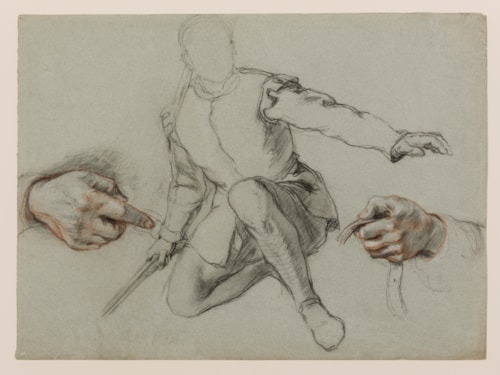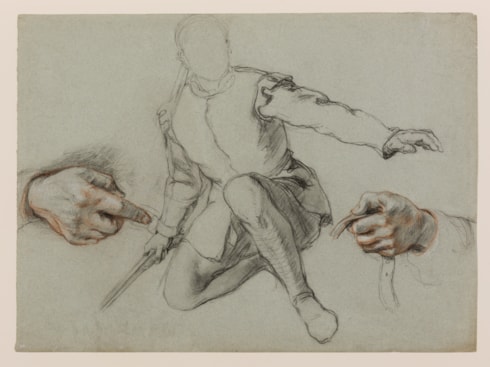
John Adam HOUSTON
Gwydir Castle 1812 - London 1884
Biography
Born in North Wales to Scottish parents, John Adam Houston studied at the Trustees’ Academy in Edinburgh, and also in Paris and Germany, before exhibiting for the first time at the Royal Institution in London. He developed a reputation as a painter of historical scenes, often on a large scale, including several depictions of battles between Cavaliers and Parliamentarians. He also worked as a watercolourist, depicting numerous views in Scotland, England, France, Germany and Italy. These were exhibited at the Royal Scottish Academy, to which he was elected an Associate Member in 1842 and an Academician three years later, following the submission of a diploma painting depicting The Good Samaritan. By the 1850s Houston was working mainly in watercolour, and his reputation as a landscape watercolourist was such that he gave lessons to the young Waller Hugh Paton. It was probably through Paton that Houston met John Ruskin, and began to develop an interest in the Pre-Raphaelites, which was further developed when he moved to London in 1858. The Pre-Raphaelite landscape watercolours of the Scottish Highlands that Houston produced in the 1860s, richly detailed and strongly influenced by the example of Ruskin, account for much of his finest work. Although living in London after 1858, he carried on painting in the Highlands and exhibiting his work in both Edinburgh and London. Houston also continued to paint large historical canvases, although these often lack the charm and skill of his watercolours.
As one early history of Scottish art has noted of Houston, ‘he was more interested in the picturesque and romantic than in the antiquarian element in history…He took subjects from many periods of history, but perhaps his favourite was that of the great struggle between the Cavaliers and the Parliament with its picturesquely contrasting types and costumes. Within his range, and on the comparatively modest scale he usually employed, his work was accomplished and refined, and he aimed at combining brilliance of tint with harmony, his designs are frequently effective, particularly when carried out in water-colour. A number of his incidents have pleasant landscape settings, and…he painted landscapes which show considerable feeling for the sparkle and play of light.’1


